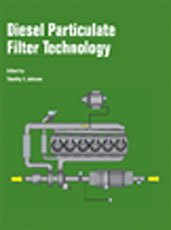Journal Article
Review of CO2 Emissions and Technologies in the Road Transportation Sector
2010-04-12
2010-01-1276
The topic of CO₂ and fuel consumption reductions from vehicles is a very broad and complex issue, encompassing vehicle regulations, biofuel mandates, and a vast assortment of engine and vehicle technologies. This paper attempts to provide a high-level review of all these issues. Reducing fuel consumption appears not to be driven by the amount of hydrocarbon reserves, but by energy security and climate change issues. Regarding the latter, a plan was proposed by the United Nations for upwards of 80% CO₂ reductions from 1990 levels by 2050. Regulators are beginning to respond by requiring ~25% reductions in CO₂ emissions from light-duty vehicles by 2016 in major world markets, with more to come. The heavy-duty sector is poised to follow. Similarly, fuel policy is aimed at energy diversity (security) and climate change impacts. Emerging biofuel mandates require nominally 5-10% CO₂ life cycle emissions reductions by 2020.

